#westray stone
Text




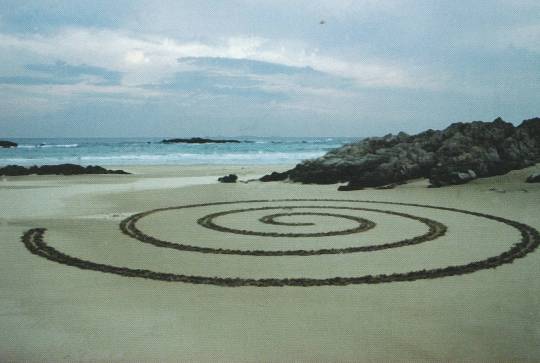

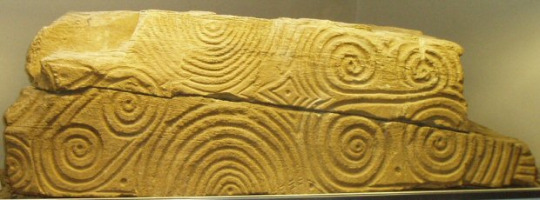

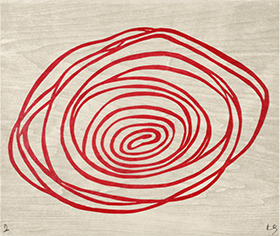


Spirals in art
Fern Ammonite - Liz McGowan (1997) | Red and White Shell - Georgia O'Keeffe (1938) | Spiral Jetty - Robert Smithson (1970) | Snow labyrinth - apulkkan on Flickr | Sculpting the Land: Artistic Interventions with the Landscape - Strijdom van der Merwe (2005) | Spiral detail from The Lindisfarne Gospels (715 - 720) | The Westray Stone, Neolithic era stone carving found in Pierowall Quarry, Orkney, Scotland | Untitled - Andy Goldsworthy | Untitled, no 2 of 12, from series Spirals - Louise Bourgeois, 2006 | 12th century snake mosaic, Church of Saint Adriano di San Demetrio Corone in Calabria, Italy | Snow Drawings - Sonja Hinrichsen (2014) |
#thinking thoughts#art#spirals#andy goldsworthy#louise bourgeois#lindisfarne gospels#georgia o'keeffe#robert smithson#sonja hinrichsen#westray stone#i kind of want a spiral tattoo...
77 notes
·
View notes
Text
Faroes!
16 June 2022
Well, not quite, actually. More below. But first,
Pierowall 3 - finding the family Seat!
(Pierowall 2 got posted twice – sorry about that, although you did get a few extra pictures. Bit of a delay appearing, so I thought it hadn’t worked, so typed it all in again.)
On our last day in Pierowall, I wanted to have one last try at finding the family farm, occupied by my father’s family from around 1841 to perhaps sometime after 1871. Sandra came with me, and we headed north from the harbour, following vague directions from various people.
At random, turning right at a crossroads in the middle of nowhere, the first house we found was called ‘Mid Ouseness’. The next house had no dogs out the front, and smoke coming from the chimney, so I knocked at the door. It was confirmed as Nether Ouseness, the family house.
It has clearly been a subsistence croft for generations. The lovely, lovely lady who answered the door was a Mrs Thompson, now living in the New house with her son.
She married in 1952 and moved into the old farmhouse, a tiny single-story thing with a stone roof and no insulation, about 12m long and 3m wide, part of a vague square of similar buildings, all also semi-derelict. The censuses show up to 20 people living on this one farm.
This single building would have been the family home at the time my family lived there, other buildings occupied by farm hands and others. It is still there, semi-derelict and used as a barn, but still holding vestiges of its occupation as a home. No ceilings, which was a surprise – when you look up you see the roof timbers, and the underside of the stone roofing. The short roof span is apparently to reduce the reliance on long timbers, which are impossibly precious on this treeless island. The hardship of such a building in the long, long dark winter is beyond our modern understanding.
The whole farm totals about 20 acres, possibly less now, and is clearly hard, hard living, speaking far more eloquently than I can of hardship, and a lack of money for investment. The ‘new’ house was built in the 1950’s, and would have been an extraordinary luxury after the stone-roofed old house, but by any modern standards it is tiny, and utterly basic. When Mrs Thompson moved in to the old farmhouse in 1952, it is likely much of it would have been as it was a century earlier – the Orkneys did not get mains electricity until the 1970’s. She must have cooked over a peat fire.
Papa Westray is visible across the Sound, now dotted with fish farms. The desolation of the spot is difficult to convey. It is utterly impossible to imagine how someone could live – as Mrs Thompson has - in that same place for an entire lifetime. She gave every impression of being perfectly content.
Faroes – or not.
We left Pierowall with every intention of heading straight for the Faroes. It was not to be, the weather window we had so carefully surveyed proving inadequate. The forecast was accurate, but our estimate of the enjoyableness of the conditions for any extended period was over-optimistic. After about 12 hours and 60 miles, three of us were seasick and feeling less than heroic, the boat entirely safe and going well but the motion was horrible, so the decision was made to turn away from the wind, and head for Shetland. A very much easier point of sailing, and reasonable humour was restored in a short while.
Shetland!
At the point we turned, it was about 75 miles to Shetland, so we expected to arrive in the early morning. Sailing at night up here is a new experience - It doesn’t get properly dark, just dark grey. The sun eventually rose, to reveal a lighter grey.
The approach to Shetland is difficult, and without modern charts and GPS would have been highly dangerous, threading through a maze of little islets and rocky outcrops. We arrived in Scalloway, on the west side of the Shetland Mainland, at about 7am. A decent breakfast was organised quickly, after which all parties retired to bed for most of the morning. Sleep. Wonderful, peaceful, restorative, quiet sleep.
Today – 16th June – Mike and I hired electric bikes and had a pedal around. The bikes were GREAT, although we had some battery issues, as they were not fully charged when we picked them up. Fortunately, we found a little fabrication company with an open door, and the LOVELY owner allowed us to charge up, which takes about half an hour. Even better, she put the kettle on, brought us tea and biscuits, and sat with us for a chat while we waited. We then cycled over to Lerwick, and had a very enjoyable day. Nice place, some lovely old buildings, a charming waterfront, if somewhat blighted by the sight of a cruise ship, as usual dominating the skyline, far too many of its 2-hour excursion trippers over-running the little town.
Barrie and Sandra were less enthusiastic about bikes, so spent the day in Scalloway, exploring every known feature of the place, scouring all the marks on every tourist guide. They did get chased out of the museum by the arrival of three coachloads of cruise shippers, bussed over from Lerwick, who regularly descend on the place. A plague, wherever they land. Too many people, too little time, their spending carefully managed by the cruise ships and their guides.
The wartime heroics of the 'Norway Bus' operators deserves further research - small boats manned by fishermen and other volunteers took personnel and supplies in both directions between Shetland and Norway, avoiding german surveillance by using small boats, and travelling in the winter storms. Unthinkably awful.
Shetland is a surprise after Orkney - greener, hillier, much wealthier, more densely populated - it even has a few trees. The buildings are often painted, mostly in bright colours, which cheers them up no end. The cars are all roadworthy, with decent tyres and no rust. On Orkney, it was clear that the MOT rules were not rigorously enforced. There is some sort of waiver in place, as there is nowhere (on Westray at least) where an MOT can be obtained. The police visit occasionally, arriving by ferry, but the locals are given enough of a warning by bush telegraph to hide away anything which is too obviously unroadworthy.
2 notes
·
View notes
Text
Historic site of the week: The Knap of Howar
Knap of Howar on the island of Papa Westray in Orkney, Scotland is a Neolithic farmstead which may be the oldest preserved stone house in northern Europe. Radiocarbon dating shows that it was occupied from 3700 BC to 2800 BC.
0 notes
Text
Man injured in Newfoundland refinery explosion has died
One of the workers injured in the Sept. 2 explosion at the refinery in Come By Chance, N.L., has died, refinery owner Braya Renewables said.
The explosion at the refinery about 150 kilometres west of St. John's sent eight people to hospital. Six workers have returned home, and one remains in hospital.
"We are deeply saddened by this tragic loss," Braya Renewables said in an emailed statement.
Glenn Nolan, president of United Steelworkers Local 9316 which represents many staff at the refinery, identified the deceased as union member Shawn Peddle.
The union posted a tribute to Facebook on Sunday notifying members of Peddle's death, saying "this is a very sad day" and offering condolences to his family.
The post said Peddle died in hospital after "fighting for his life for the past six weeks."
The cause of the explosion and subsequent fire at the refinery is being investigated by police and the province's Occupational Health and Safety division.
The refinery, which is a main source of employment in the area, was once an oil-producing plant that has been going through the process of conversion to a renewable diesel and sustainable aviation fuel operation.
Braya Renewables said in a statement the worker who died was a "well-known labourer with Braya and an integral part of the team working to convert the refinery."
The refinery says it will "do everything we can to learn from this tragedy and help prevent similar incidents from happening."
The union's Facebook post about the death says the tragedy was "preventable" and calls for the RCMP to investigate the incident under the Westray law and "leave no stone unturned."
Bill C-45 -- also known as the Westray law -- was introduced in 2003 to amend the Criminal Code and add new legal responsibilities for workplace health and safety and impose penalties for violations that result in death or injury.
The law is named after the Westray mining disaster in which 26 miners were killed when methane gas ignited in the Plymouth, N.S., coal mine in May 1992.
This report by The Canadian Press was first published Oct. 16, 2022.
This story was produced with the financial assistance of the Meta and Canadian Press News
from CTV News - Atlantic https://ift.tt/KI5XWjU
0 notes
Text
The Story of Scottish Art episode 1
In a four-part series, artist Lachlan Goudie traces the development of Scottish art from the Neolithic Era to the present day #art #history #Scotland
The Story of Scottish Art episode 1: In the first programme, Lachlan explores Scotland’s earliest art. He visits the Ring of Brodgar in Orkney, where standing stones have watched the seasons pass for thousands of years. On the island of Westray he encounters an ancient figurine – the Westray Wife – the oldest sculpted human figure in the British Isles. He explores the sophisticated art of the…
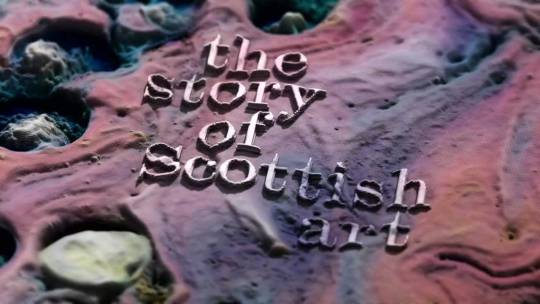
View On WordPress
0 notes
Text
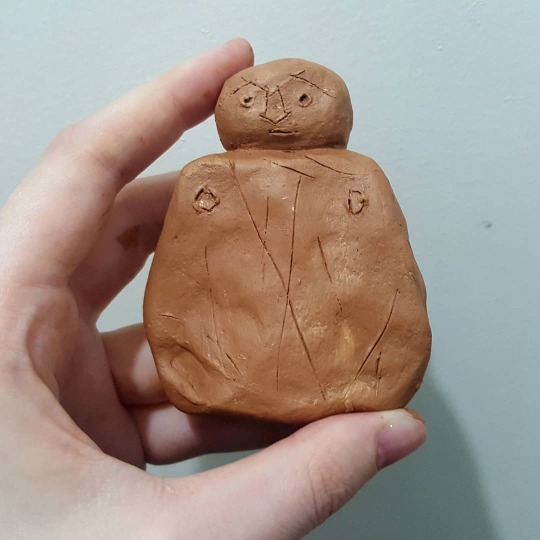
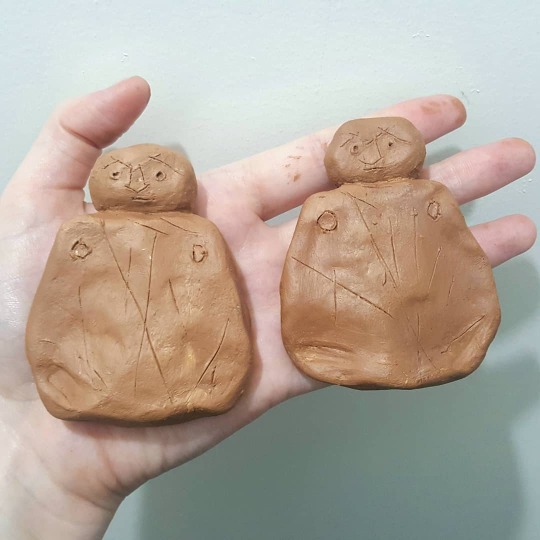
Just finished these two Orkney Venus Neolithic replicas, ready to ship tomorrow! You can order yours here
#pagan#art#etsy#witch#home#orkney venus#westray wife#neolithic#stone age#prehistory#replica#historical#art history#sculpture#carving#stone#clay#pottery#ceramics#artists on tumblr#women artists#paganart#pagandecor#pagan wicca#orkney#scotland#etsyshop#etsymaker#etsyhandmade
4 notes
·
View notes
Text
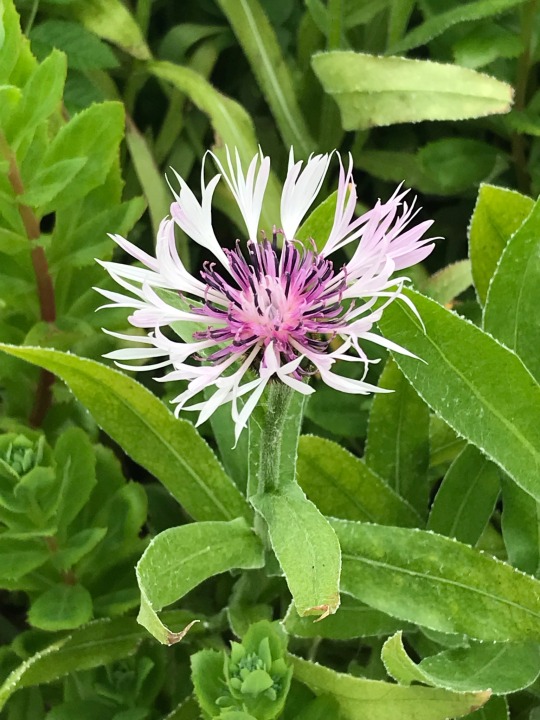
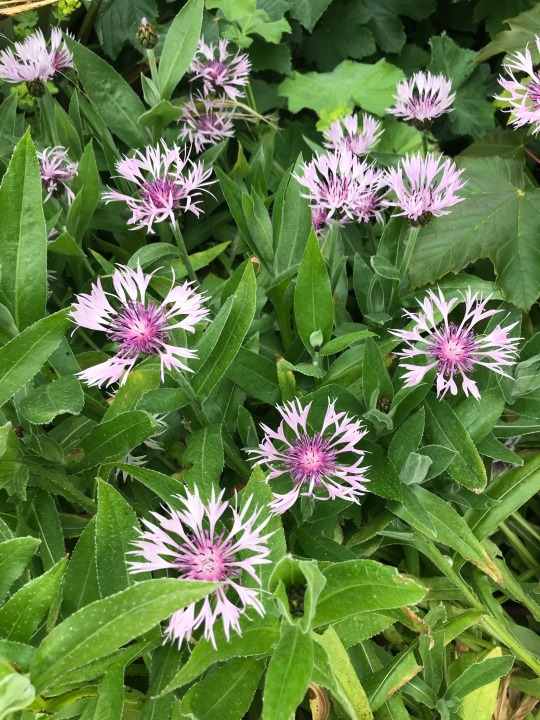
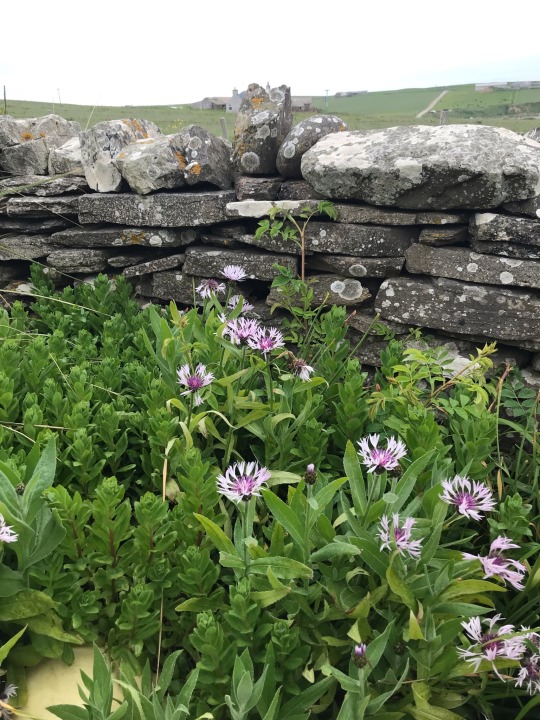
Plant of the Day
Monday 5 July 2021
In a beautifully cared for garden on the island of Westray, Orkney, the soft pink flowers of Centaurea montana 'Carnea' (perennial cornflower) created a display in the shelter of the stone wall. These plants need a well-drained soil, in sun or partial shade. The old flowering stems can be removed at the base once they have finished blooming to encourage regrowth and further flowers.
Jill Raggett
#centaurea#perennialcornflower#pinkflowers#herbaceousperennial#herbaceous#plants#writtledesign#gardens#horticulture#garden#orkney#westray#flowers
116 notes
·
View notes
Video
Cross slab stone by Tony
Via Flickr:
Displayed in Tankerness House Museum, this stone was unearthed in 1967 from St. Boniface Kirk on Papa Westray and has a carved square cross above an encircled cross pattern. This stone probably dates from the seventh or eight century from the period that the Picts where converting to Christianity.
#East Mainland#Orkney#Scotland#britain#europe#geo:lat=58.98141353#geo:lon=-2.95936254#geotagged#island#©2021 Tony Sherratt#2021 09 22 114915#Tankerness House Museum#stones#slabs#carvings#pictish
9 notes
·
View notes
Photo


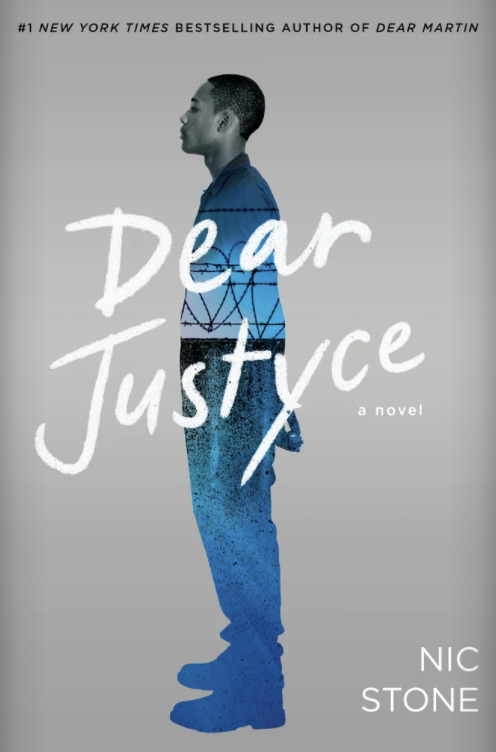

We have four books on our radar this week! Are any of them on your TBR list?
Skyhunter by Marie Lu
Roaring Brook Press
The Karensa Federation has conquered a dozen countries, leaving Mara as one of the last free nations in the world. Refugees flee to its borders to escape a fate worse than death--transformation into mutant war beasts known as Ghosts, creatures the Federation then sends to attack Mara.
The legendary Strikers, Mara's elite fighting force, are trained to stop them. But as the number of Ghosts grows and Karensa closes in, defeat seems inevitable.
Still, one Striker refuses to give up hope.
Robbed of her voice and home, Talin Kanami knows firsthand the brutality of the Federation. Their cruelty forced her and her mother to seek asylum in a country that considers their people repugnant. She finds comfort only with a handful of fellow Strikers who have pledged their lives to one another and who are determined to push Karensa back at all costs.
But when a mysterious prisoner is brought from the front, Talin senses there's more to him than meets the eye. Is he a spy from the Federation? Or could he be the weapon that will save them all? -- Cover image and summary via Bookshop.org
Shine by Jessica Jung
Simon & Schuster Books for Young Readers
What would you give for a chance to live your dreams?
For seventeen-year-old Korean American Rachel Kim, the answer is almost everything. Six years ago, she was recruited by DB Entertainment--one of Seoul's largest K-pop labels, known for churning out some of the world's most popular stars. The rules are simple: Train 24/7. Be perfect. Don't date. Easy right?
Not so much. As the dark scandals of an industry bent on controlling and commodifying beautiful girls begin to bubble up, Rachel wonders if she's strong enough to be a winner, or if she'll end up crushed... Especially when she begins to develop feelings for K-pop star and DB golden boy Jason Lee. It's not just that he's charming, sexy, and ridiculously talented. He's also the first person who really understands how badly she wants her star to rise.
Get ready as Jessica Jung, K-pop legend and former lead singer of Korea's most famous girl group, Girls Generation, takes us inside the luxe, hyper-color world of K-pop, where the stakes are high, but for one girl, the cost of success--and love--might be even higher. It's time for the world to see: this is what it takes to SHINE. -- Cover image and summary via Bookshop.org
Dear Justyce by Nic Stone
Crown Books for Young Readers
In the highly anticipated sequel to her New York Times bestseller, Nic Stone delivers an unflinching look into the flawed practices and silenced voices in the American juvenile justice system.
Vernell LaQuan Banks and Justyce McAllister grew up a block apart in the Southwest Atlanta neighborhood of Wynwood Heights. Years later, though, Justyce walks the illustrious halls of Yale University . . . and Quan sits behind bars at the Fulton Regional Youth Detention Center.
Through a series of flashbacks, vignettes, and letters to Justyce--the protagonist of Dear Martin--Quan's story takes form. Troubles at home and misunderstandings at school give rise to police encounters and tough decisions. But then there's a dead cop and a weapon with Quan's prints on it. What leads a bright kid down a road to a murder charge? Not even Quan is sure. -- Cover image and summary via Bookshop.org
Historically Inaccurate by Shay Bravo
Wattpad Books
It only takes one moment to change your life forever...
After her mother’s deportation last year, all Soledad “Sol” Gutierrez wants is for her life to go back to normal. Everything’s changed―new apartment, new school, new family dynamic―and Sol desperately wants to fit in. When she joins her community college’s history club, it comes with an odd initiation process: break into Westray’s oldest house and steal . . . a fork?
There’s just one problem: while the owners of the house aren’t home, their grandson Ethan is, and when he catches Sol with her hand in the kitchen drawer, she barely escapes with the fork intact. This one chance encounter irrevocably alters her life, and Sol soon learns that sometimes fitting in isn’t as important as being yourself―even if that’s the hardest thing she’s ever had to do. -- Cover image and summary via Goodreads
32 notes
·
View notes
Text
youtube
Sacred Geometry in Neolithic Orkney | Origins of Metrology and Geometry at the Knap of Howar
Published on Feb 28, 2020
Join Megalithomania and guest host Nicholas Cope on the 'Megalithic Origins of Orkney Tour' August 15th - 22nd 2020: http://www.megalithomania.co.uk/orkne....
In this video Hugh Newman explores the 5,700 year old Knap of Howar on Papa Westray, Orkney. It consists of two stone 'houses' similar to the later Skara Brae, and showS sophisticated geometry, encodeS the megalithic yard and the golden section, and may be where many of the ideas for the megalithic stone circle building culture originated. Featuring the work of author Nicholas Cope who wrote 'The Knap of Howar and the Origins of Geometry', the video explores the site thoroughly and includes exclusive aerial footage.
Also, the flight here from mainland Orkney is the world's shortest flight (that we include on the tour in August!)
3 notes
·
View notes
Photo
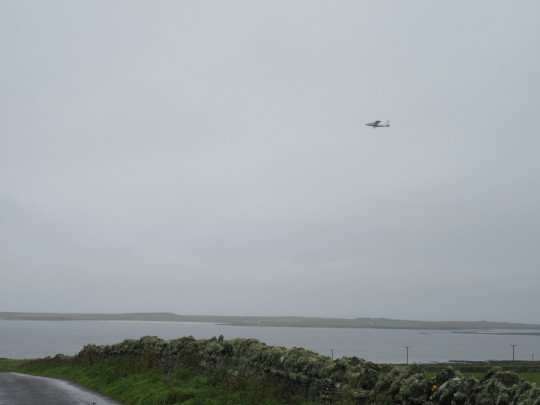
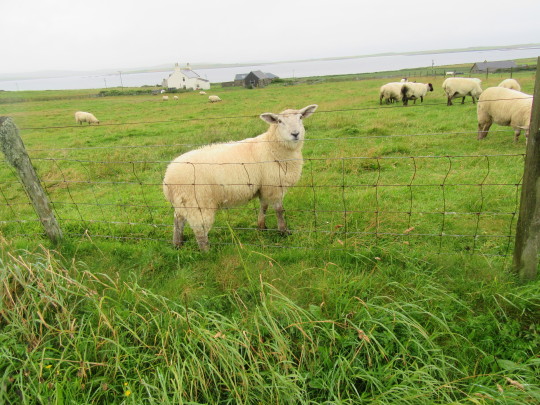
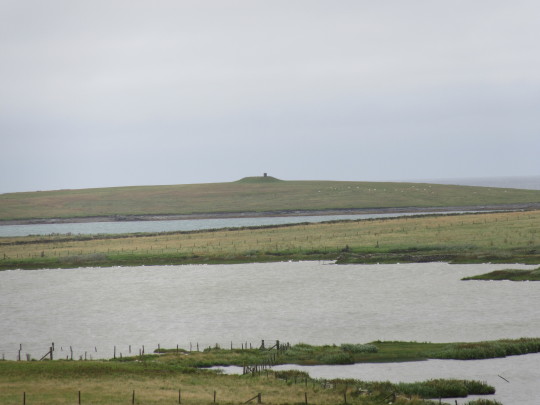
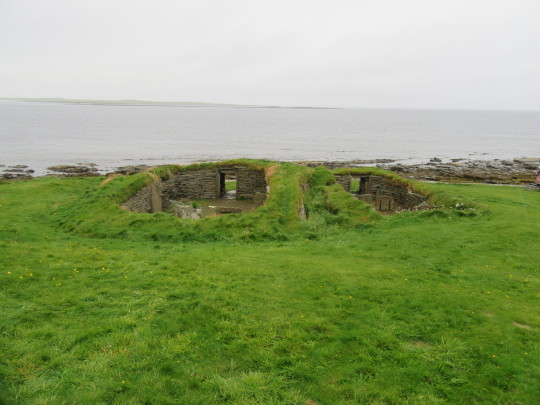
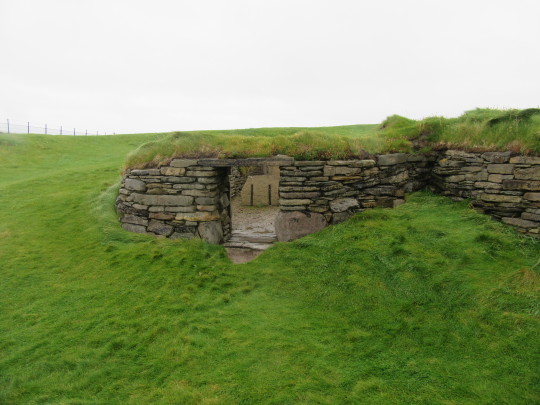

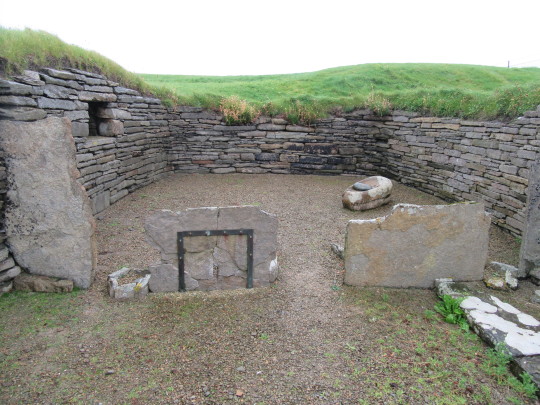
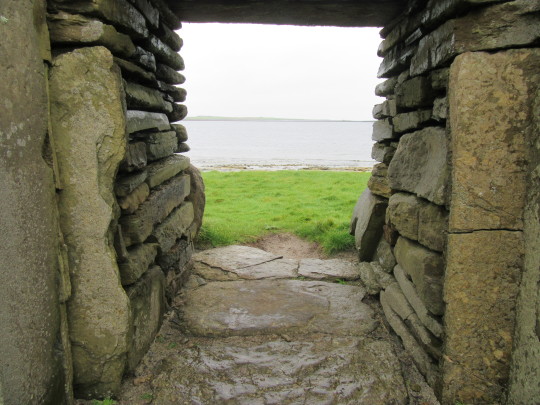
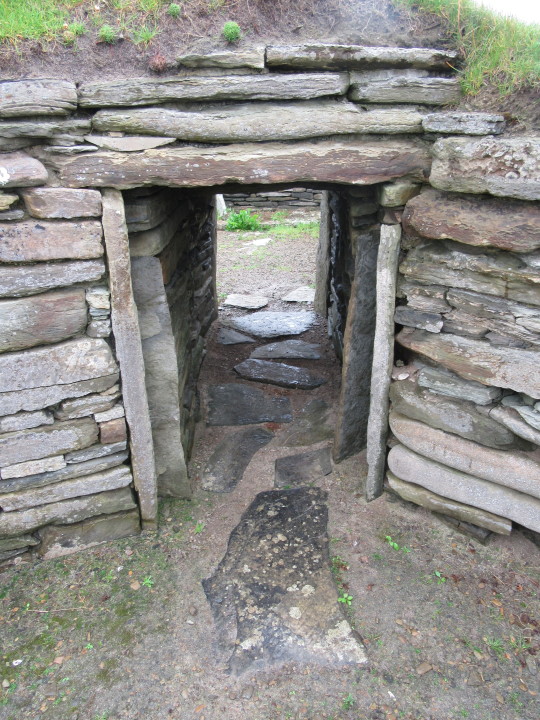
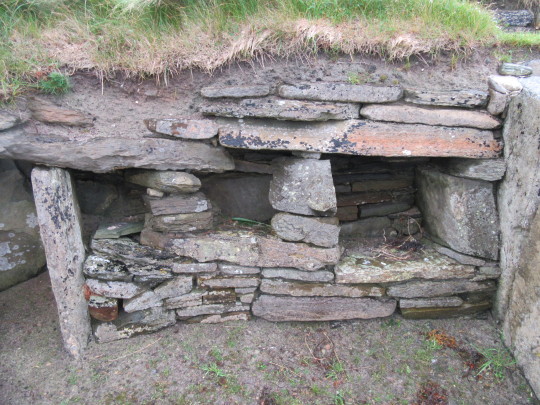
Knap of Howar, Papa Westray, Orkney, Scotland
Previous
Since I was already on Orkney, I wanted to go see the Knap of Howar, which is the oldest house in Europe. “Already on” turned out to be a bit of a misnomer: The knap is located on Papa Westray, which is an island off the coast of Westray, which in turn is northwest of Mainland. There are two options for getting there: The ferries, which run both direct to Papa Westray and via Westray, and the interisland plane service, which flies from Kirkwall to Westray and then the world’s shortest flight (2 minutes!) from Westray to Papa Westray.
Unfortunately I tried too late to book a ticket for the plane, so just took pictures of it as it came in (Photo 1).
Instead I took the ferry. From Kirkwall to Westray was a normal ferry like those in the Hebrides or elsewhere. But once on Westray, the departure point for Papa Westray was at the other end of the island--which meant I took the local bus. It runs between the two ports when the ferries are in and “as requested” as long as you give them 4 hours warning. It’s a van, really. And at the other port, the second ferry is a motorboat with benches in the back, that also carries the weekly prescription delivery for Papa Westray.
Why all this? Because Papa Westray has a resident population of 90 people. Once a week a doctor flies out and twice a week a banker comes over from Westray--the island is too small to have a bank. Inevitably, it’s a close knit community. Last year, the regular banker took a vacation and the bank sent a replacement for two weeks--but most of the villagers waited for their regular person to return, and then threw her a party.
At any rate, upon arriving on Papa Westray I walked down the one road to the coast, where the Knap of Howar is. What you have today is two houses sunk into the turf at the edge of the beach, in the middle of a sheep field. There is no entry fee--aside from whatever you had to pay to get out there in the first place.
The houses are about five hundred years older than Skara Brae, but built on a similar plan: From the beginning they were sunk into the ground to help with insulation, and given low tunnels both for entry and between houses. However, unlike in Skara Brae, these houses had multiple rooms with walls made of thin stone, and the wall storage holes were more complex.
Also I could stand on the ground where people lived 5500 years ago, and that was pretty sweet.
I wanted to visit a chambered cairn on...an island off the coast of Papa Westray (called the Holm of Papa Westray), but after asking around the village, I learned boat to the island cost 120 pounds and that was just too much. However, in the process I discovered that the hostel, the post office, the pharmacy, and the only grocery store were all the same business, and it was open from 10-12 and 2-4 on weekdays only. So good luck if you’re caught there.
Next
2 notes
·
View notes
Text
Pierowall
11 June 2022
We are safely tied up in Pierowall in Westray, awaiting strong winds later today. Once conditions improve, we intend heading to the Faroes.


The prevailing architectural finish is still pebbledash, in a dreary grey, but the stone cottages are charming, some with ancient stone slab roofs. The cottage above, with a sod roof, is unusual - possibly a modern take on an ancient tradition.
We're keeping busy looking around, although currently hiding in a hotel for lunch, waiting for rain to stop.
The graveyard has many mentions of my family name (Manson) and the related Traills - mum has done lots of research.
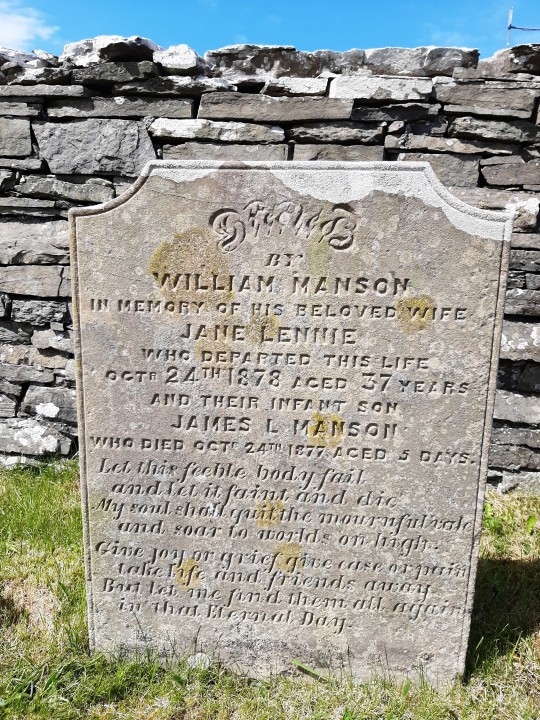
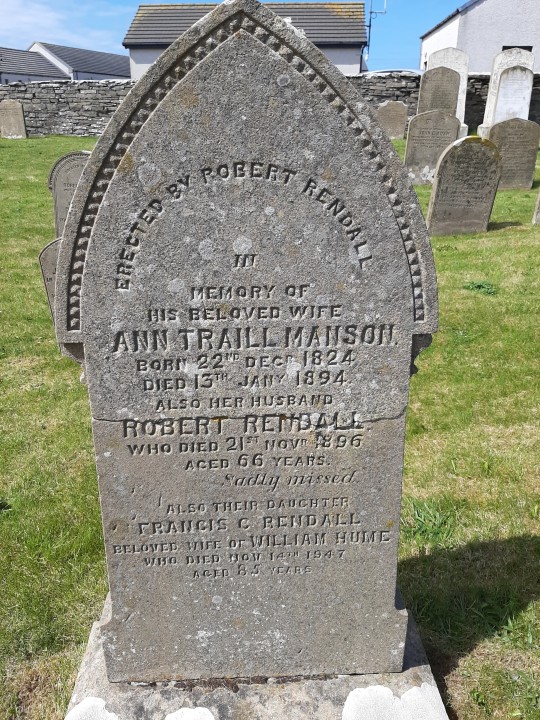
1 note
·
View note
Photo
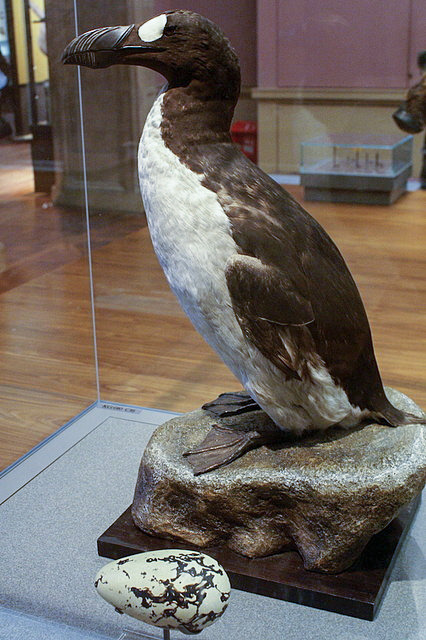
On July 3rd 1844 the last pair of Great Auks were killed.
I sometimes get a nose, or in this case a beak, for history and this story took my interest when I found it on Wiki today. Now these two Auks were killed on Geirfuglasker (the "Great Auk Rock") off Iceland.It was from here I found out the story of the last Great Auk in Scotland.
In June of 1840, three sailors hailing from the Scottish island of St. Kilda landed on the craggy ledges of a nearby seastack, known as Stac-an-Armin. As they climbed up the rock, they spotted a peculiar bird that stood head and shoulders above the puffins and gulls and other seabirds.
The scruffy animal’s proportions were bizarre—just under three feet tall with awkward and small wings that rendered it flightless, and a hooked beak that was almost as large as its head. Its black and white plumage had earned it the title the “original penguin,” but it looked more like a Dr. Seuss cartoon.
The sailors watched as the bird, a Great Auk, waddled clumsily along. Agile in the water, the unusual creature was defenseless against humans on land, and its ineptitude made it an easy target “Prophet-like that lone one stood,” one of the men later said of the encounter.
Perhaps the men enjoyed the thrill of the hunt, or perhaps they realised its meat and feathers were incredibly valuable. In any case, they abducted the bird, tying its legs together and taking it back to their ship. For three days, the sailors kept the Great Auk alive, but on the fourth, during a terrible storm, the sailors grew fearful and superstitious. Condemning it as “a maelstrom-conjuring witch,” they stoned it to death. And that was that!
It was the last of its kind to ever be seen on the British Isles. Four years later, the Great Auk vanished from the world entirely when fishermen hunted down the last pair on the shores of that Icelandic Isle.
St Kilda was the only certain site and much of our knowledge of the species in life comes from the description given by Martin Martin following his visit there in 1697. Papa Westray in Orkney was another known haunt, with William Bullock gaining some infamy in the early 19th century for his attempts to capture the pair there, although there is no actual proof that they bred there. Bones are, however, common around early human habitations in Scotland and while these could have been brought from elsewhere, many paleozoologists suspect that there were several large colonies in Scotland which were largely wiped out by early Neolithic hunter-gatherers. As suggested by the scientific name, the Great Auk is also probably the original 'penguin', the name assumed to be from the Welsh for white head, referring to the white flash on the forehead. Early visitors to the Antarctic presumably transferred the name to the superficially similar but unrelated birds they found there. Nowadays, according to Errol Fuller in his book on Extinct Birds, there are just 78 Great Auk skins and about 75 eggs left in existence. The picture is from Wiki and the bird is on display in The Kelvingrove.
42 notes
·
View notes
Text
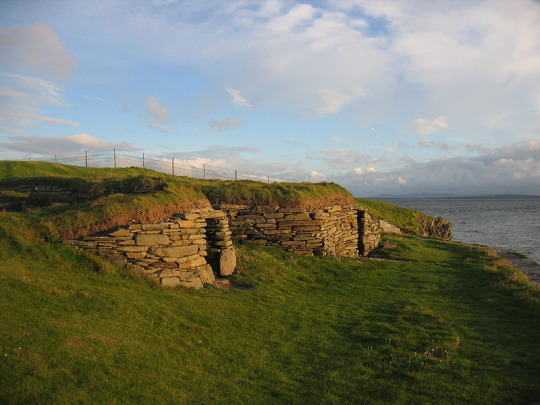
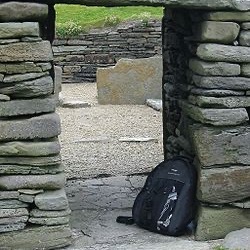
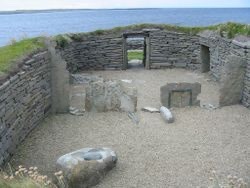
The Knap of Howar on the island of Papa Westray in Orkney, Scotland is a Neolithic farmstead which may be the oldest preserved stone house in northern Europe. Radiocarbon dating shows that it was occupied from 3700 BC to 2800 BC
They were constructed on an earlier midden, and were surrounded by midden material which has protected them. There are no windows; the structures were presumably lit by fire, with a hole in the roof to let out smoke. Though they now stand close to the shore, they would have originally lain inland.
The walls still stand to an eaves height of 1.6 metres (5 ft 3 in), and the stone furniture is intact giving a vivid impression of life in the house.
0 notes
Photo
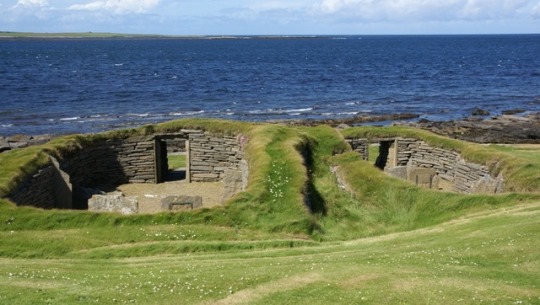
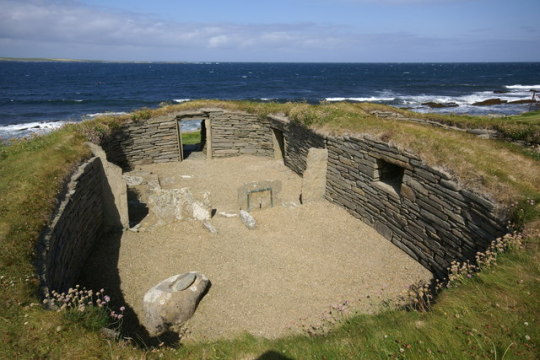
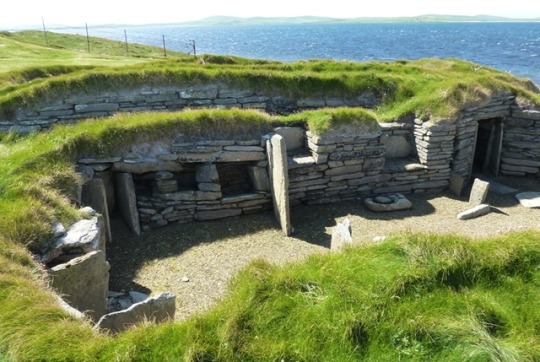
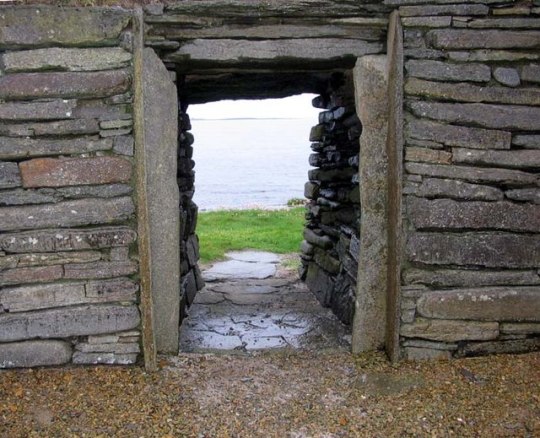

Knap of Howar, Orkney Islands, Scotland
The Knap of Howar on the island of Papa Westray is a Neolithic farmstead which may be the oldest preserved stone house in northern Europe. Radiocarbon dating shows that it was occupied from 3700 BC to 2800 BC, earlier than the similar houses in the settlement at Skara Brae on the Orkney Mainland.The farmstead consists of two adjacent rounded rectangular thick-walled buildings with very low doorways facing the sea. The larger and older structure is linked by a low passageway to the other building, which has been interpreted as a workshop or a second house. Though they now stand close to the shore, they would have originally lain inland. The stone furniture is intact giving a vivid impression of life in the house. Items found in middens (refuse heaps) show that the inhabitants were keeping cattle, sheep and pigs, cultivating barley and wheat and gathering shellfish as well as fishing for species which have to be line caught using boats. Finds of finely-made and decorated Unstan ware pottery link the inhabitants to chambered cairn tombs nearby and to sites far afield including Balbridie and Eilean Domhnuill. The name Howar is believed to be derived from Old Norse word haugr meaning mounds or barrows.
#history#neolithic#scotland#ruins#orkney#knap of howar#papa westray#ancient#coastal#uk#3rd millennium bc#4th millennium bc
2K notes
·
View notes
Photo
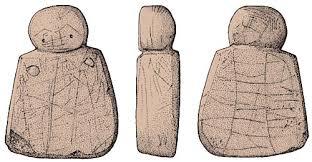

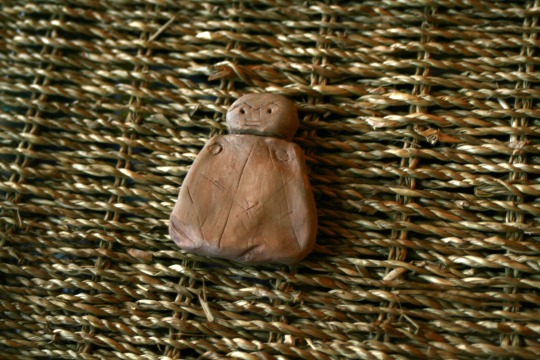
Orkney Venus Handmade Replica
#personal#etsy#for sale#orkney#orkney venus#westray wife#archaeology#prehistory#neolithic#stone age#sculpture#art#figurine#historical#unique#handmade#goddess#venus#ancestor#pagan#paganism#scotland#scottish
10 notes
·
View notes